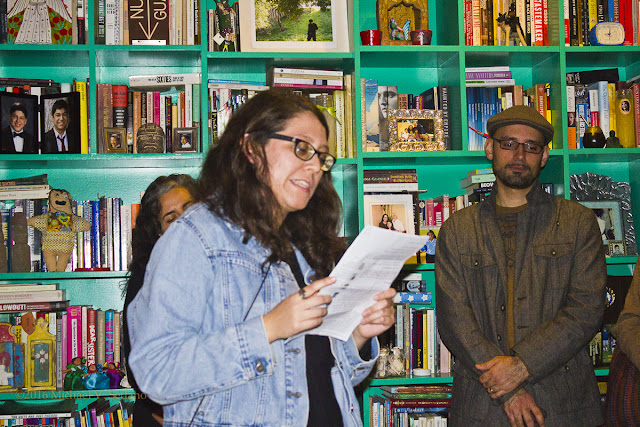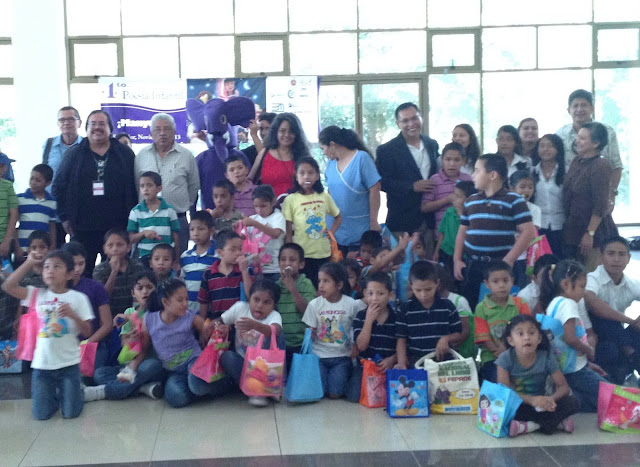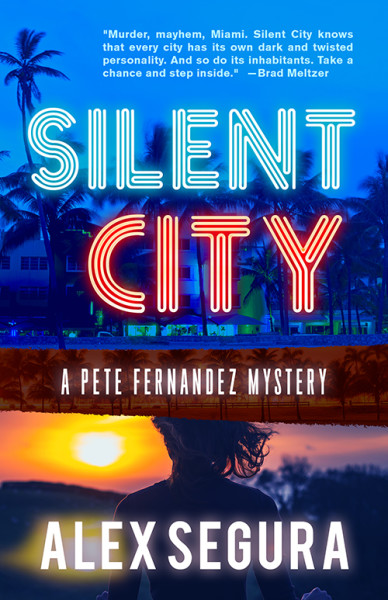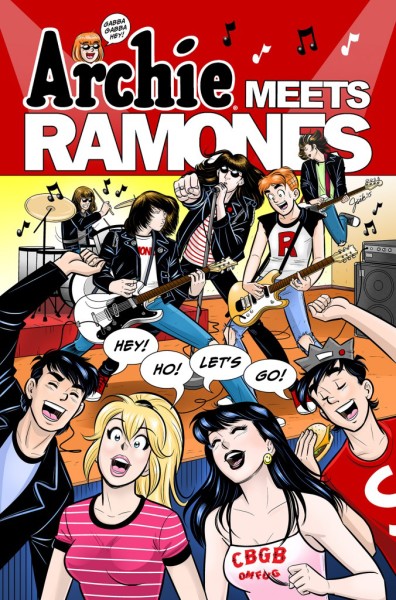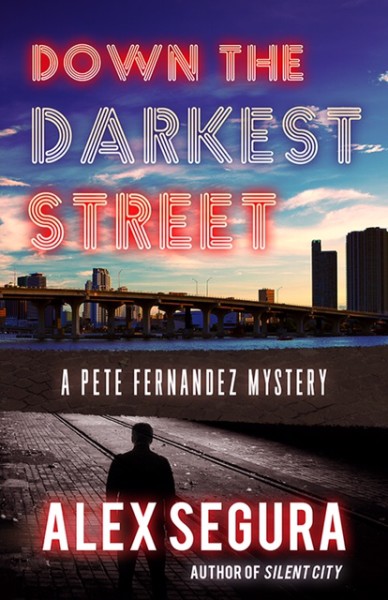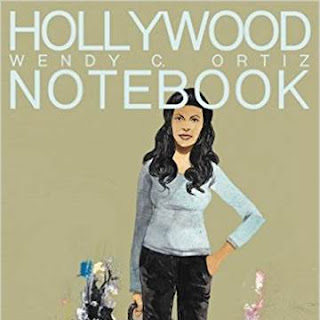Ten Best Poems of 2015 La Bloga On-line FloricantoFrancisco X. Alarcón, Sandra Barrios Del Mar, Mario Angel Escobar, Kai Coggin, Briana Muñoz, Donny Jackson, Jackie Lopez, Ana Chig, Juliana Aragón Fatula, Lara GularteSince 2010, La Bloga and the Facebook Poetry Community,
Poets Responding to SB 1070 Poetry of Resistance, founded in 2010 by Francisco X. Alarcón against the background of repression in Arizona, have worked together to present an on-line floricanto featuring emerging and established poets.
La Bloga On-line Floricanto originated as an adjunct to
2010's reunion floricanto of the
1973 Festival de Flor y Canto. La Bloga On-line Floricanto provides an international platform for poetry inspired by, and inspiring the ongoing movimiento of mind, spirit, and expression essential in building community that reflects current exigencies as well as a lasting record of who we are and what we stand for.
In the course of a year, hundreds of poets submit work for consideration for La Bloga's monthly On-line Floricanto. Organized this month by Iris De Anda, the Moderators combed through the year's already acclaimed works to nominate ten poems as
2015's best.La Bloga proudly presents these works for your enjoyment and celebration of poetry and the spirit of activism that inheres in poetry of resistance.
“Poeta Macehual” Por Francisco X. Alarcón. Also in English and Scots
"Nací Mujer" Día Internacional de la Mujer Por Sandra Barrios Del Mar
"I can't breathe"By Mario Angel Escobar
“Planting An Acorn After A Massacre” By Kai Coggin
“Raíz” By Briana Muñoz
"41.52" By Donny Jackson
"We Are Humans Just Like You: Detention Centers" By Jackie Lopez
"Conversación con poeta preocupado del tiempo" Por Ana Chig
"The Wall" By Juliana Aragón Fatula
"Crossings" By Lara Gularte
Special Announcement from Juan Felipe Herrera:It is an honor to announce the first YOLTEOTL POET LAUREATE AWARD to Francisco X. Alarcón.
Yolteotl — the Nahuatl term for Divine Heart. In the time of the Aztecs it was designated to the artists who demonstrated and accomplished an art that was for the people at all levels and all life.
Thank you Francisco, dear brother - for giving every ounce of your life in the last thirty-five years (and more) to our communities - through your poems, translations, poetry, children’s books, presentations, teaching, performances, keynotes, international travels and most of all the love that poured out of you at every instant. In Xochitl in Cuicatl - in Flower & Song.![]() |
Art by Joaquín Ramón Herrera
|
POETA MACEHUALPor Francisco X. AlarcónMacehual: término náhuatl (azteca) para la gente común que forma la mayoría del pueblo y cuya labor constituye el meollo vital de la sociedad.
soy un poeta
macehual, seguidor
de mariposas
un trovador
sin corte, sin cuartel
que anda a pie
por los senderos
sin caminantes fuera
de los linderos
mi voz es flor,
canto silvestre libre
como el rocío
la Luna de abril
es mi madre del cielo
que me bendice
el río revuelto
que un huracán desata
es hermano mío
soy un poeta
hacedor de versos
de vida y lluvia
sin otro templo
que la cima del monte
bajo el Sol
mi cara la hallo
en las caras y sonrisas
de mi gente
soy un poeta
macehual, seguidor
de mariposas
sin otro techo
que el cielo raso
lleno de estrellas
mi bandera es
blanca nube del cielo,
paloma de paz
el mundo entero
-ya sin fronteras- es
mi casa y solar
© Francisco X. Alarcón
1 de mayo de 2015
MACEHUAL (COMMON FOLK) POET By Francisco X. AlarcónI am a macehual
poet, a follower
of butterflies
a troubadour
with no court or quarter,
a hiker on foot
trekking paths with
no other walkers, beyond
well travelled ways
my voice is a flower,
a wild song free
like the dew
April’s Moon is
my mother blessing me
from the sky
the unruly river
a hurricane brings about
is my own brother
I am a poet,
a wordsmith of verses
for life and rain
with no other temple
than the mountain summit
under the Sun
I find my face
on the faces and smiles
of my people
I am a macehual
poet, a follower
of butterflies
with no other ceiling
than the open sky
full of stars
my sole flag is
a white cloud in the sky,
a dove of peace
the whole world
-already borderless- is
my home and backyard
Macehual: A Nahuatl (Aztec) term for the common folk, the bulk of the people, whose labor constitutes the vital core of society.© Francisco X. Alarcón
May 1, 2015
FOWK POETBy Francisco X. AlarcónTrans. to Scots by John McDonaldam a fowk makar,
a follaer
o butteries
a fowk singer
wi nae coort or quarter,
a traiker on fuit
traikin peths alane,
ayont
weill-traikit weys
ma vice's a flooer,
a wull sang lowse
lik the deow
Aprile's muin's
ma mither sainin me
frae the lift
the gurly watter
blowster steert
is ma ain brither
am a makar,
wrochtin verses
fir life an weet
wi nae ither tempel
than yon muntain peen
unner the sin
a fin ma neb
in aw the smiles
o ma ain fowk
am a fowk makar,
follaer
o butteries
wi nae ither ruif
nor the apen lift
fou o sterns
ma yin flag's
a fite clud i the lift,
a doo o Pace
the hail warl
-a'ready mairchless -
is ma hame, ma back coort
![]()
Francisco X. Alarcón, award winning Chicano poet and educator, is the author of thirteen volumes of poetry, including, Ce•Uno•One: Poems for the New Sun (Swan Scythe Press 2010), From the Other Side of Night: Selected and New Poems (University of Arizona Press 2002), Snake Poems: An Aztec Invocation (Chronicle Books 1992), and Sonnets to Madness and Other Misfortunes (Creative Arts Book Company 2001). His most recent books are Canto hondo / Deep Song (University of Arizona Press 2015) and Borderless Butterflies / Mariposas sin fronteras (Poetic Matrix Press 2014). He has published six books for children available through Lee & Low Books, among them, Animal Poems of the Iguazú (2008) and Poems to Dream Together (2005). He teaches at the University of California, Davis, where he directs the Spanish for Native Speakers Program. He is the creator of the Facebook page POETS RESPONDING TO SB 1070 and co-founder of Los Escritores del Nuevo Sol / The Writers of the New Sun, a writers’ group of Sacramento, California.
NACÍ MUJER !! By Sandra Barrios del MarPoema dedicado al día internacional de la mujer
Cuando mi madre me dio a luz....
Llegaron los delfines..
A la orilla del mar....
Saltaron de felicidad...
Y juguetearon en el azul golfo de fonseca....
Y ángeles y querubines
Han sostenido mi alma....
Mi alma rebelde e inquieta
Que nació con la bravura
De las olas al estrellarse
En las rocas...
Bendito sea el esperma de mi padre ...
Y bendito el vientre de mi madre...
Que nací mujer...
Nací del amor ....
De un hombre valiente
Y de una mujer sorprendente...
Hoy tengo la sabiduría
De las estrellas...
Tengo la convicción...
De amar sin dolor...
Tengo un arcoiris
En el corazón....
Cuando me entregó al amor
Nacen volcanes en erupción...
Tengo la fuerza de mover
Montañas...
Tengo alas para volar...
Tengo sueños por los cuales luchar...
Tengo dos ovarios en su lugar...
Tengo en mis pupilas el secreto del universo...
Tengo la perfecta linea en mis labios para entregar
El beso qué nadie aún no descubrió....
Nací mujer
Y dentro de mi brota un verso cristalino....
Un verso ... Un verso..
El dulce verso...de libertad...
Nací mujer...
Nací poesía...
Tengo la fuerza de un tornado....
Tengo la magia en un puñado....
Soy mujer poesía
Porque nací de un gran amor !!!
Bendito sea el creador
Qué nací mujer !!!!!
Soy madre
Soy guerrera
Soy poesía
Soy revolución....
Porque soy la misma evolución...
Soy creadora de vida
Con el privilegio más alto
De la creación...
Soy divina...
Soy mujer...
Soy extraordinariamente
M u j e r......!!!
Gracias al creador del universo por permitirme
Nacer ....
Nacer mujer !!!!!
Autora: sandra barrios del mar
Como un tributo al día internacional de la mujer !!
Sandra Barrios del Mar lives in Los Angeles. She is originally from El Salvador.
"I can't breathe”By Mario Angel EscobarIn memory of Eric Garner Officer, officer,
My family is waiting for me.
Please listen to me.
I can't breathe!
Officer, officer,
I don't want to be another anonymous death
in the holocaust of indifference.
I can't breathe!
Officer, officer,
Don't let me fall on the sidewalk.
Dirty pavement where I've been since the days of slave patrol.
Ancestral language
stripped naked
in chains.
I can't breathe!
Officer, officer,
people will missed me at the dinner table.
I am lifeworthy.
Please listen to me.
I can't breathe!
Officer, officer,
The soul bleeds.
Please don't let darkness open its jaw.
Earthquake in my lungs.
I can't breathe!
Officer, officer,
Don't deny me of that precious oxygen.
This drum still beats strong.
I can't breathe!
Officer, officer,
don't dismiss my plight.
Don't erase my name.
You and I travel together
in this floating asteroid.
Please let me be.
I can't breathe!
Officer, officer,
Every time you see me,
you try to mess with me.
Please listen to me!
I can't breathe!
Mario A. Escobar (January 19, 1978-) is a US-Salvadoran writer and poet born in 1978. Although he considers himself first and foremost a poet, he is known as the founder and editor of Izote Press. Escobar is an assistant professor in the Department of Foreign Languages at LA Mission College and also teaches at Cal State University. Some of Escobar’s works include Al correr de la horas (Editorial Patria Perdida, 1999) Gritos Interiores (Cuzcatlan Press, 2005), La Nueva Tendencia (Cuzcatlan Press, 2005), Paciente 1980 (Orbis Press, 2012). His bilingual poetry appears in Theatre Under My Skin: Contemporary Salvadoran Poetry by Kalina Press.
Planting an Acorn After a Massacre By Kai CogginWhen I heard the news
of the 132 school children massacred,
the taliban suicide bombers in
explosive-lined vests
blowing up the lights of brightened futures,
emptying thousands
of shell casings into the heads of innocents,
I went outside with my grief,
couldn’t hold it indoors,
I walked in circles
and wondered
how the sun
could continue this charade,
how the breeze could decorate
the almost barren trees
with dancing dried skirts,
quivering leaves.
I held the hands of the sky
and whispered unknown names
into the afternoon silence,
as two turkey vultures
cut the blue by
flying infinities overhead.
I walked.
Each step accompanied
by the sound of dried leaves
crunching underfoot,
and fallen acorns shone slick
in the light of the sun,
some dusted with grains of sand
that reflected prismatically
into the tiniest rainbows,
almost invisible.
I picked one up.
It had cracked open,
its red root arm reaching out for earth,
seed sprout seeing possibility,
the process of growth
inherent in its nature.
Without question and without fail
scores of acorns around me
had split open
in these cold months,
split open and started the process of
digging themselves down into the dirt,
the brilliant design that unlocks
wooden hinges and breaks free.
I thought of the children,
their arms reaching toward futures
that they could not see
but could feel,
their brilliant design,
their chubby reddened cheeks,
their laughter,
their learning becoming
scattered schoolbooks
and bomb-blasted classrooms,
they will not become trees,
they will not get past the point
of just barely breaking through,
red blood arms shielding faces
that wonder how this could be the end,
then it is,
was,
blackness,
ending.
The innocents should not die
for a God that does not live by the moral code
that innocents should not die.
I get lost in all this,
the soft breeze,
the blood,
the peaceful valley of my home,
the massacre that touches the same earth floor
dirt on which I stand and gather bursting-open acorns,
juxtaposition of death and life,
my red root fingers dig for the meaning,
for the karmic and cosmic balance,
and all I can do is find a patch of softened moist soil,
a spot that gets good sunlight,
and I shovel a small hole with a jagged flat rock
and lay the
acorn
inside
the hole
with the red root
pointing toward the planet’s core.
“Something small must have a chance,”
I say to myself,
and I cover the acorn with the supple ground.
I encircle the life burial plot
with a mandala of 11 acorn caps,
(you know the little hats that acorns wear)
I make a circle,
because circles are unbroken,
because life should be unbroken,
because something small must have a chance.
I close my eyes,
and let the sun kiss me
until I am warmed inside
with the red of late afternoon,
until I see the mightiest oak tree in my mind,
132 sprawling green limbs
reaching up, up, up,
for
Heaven.
Kai Coggin is a poet and author living on the side of a small mountain in Hot Springs, AR. She holds a degree in Poetry and Creative Writing from Texas A & M University. Her work has been published or is forthcoming in Split This Rock, Yellow Chair Review, ANIMA, Blue Heron Review, Lavender Review, Broad!, Elephant Journal, The Bitchin’ Kitsch, Cliterature, ITWOW, [empath] quarterly, Catching Calliope, and other journals, as well as anthologized in several collections.
Kai is the author of PERISCOPE HEART (Swimming with Elephants Publications, 2014). Her poetry has recently been nominated for The Pushcart Prize and Bettering American Poetry 2015. She is also a Teaching Artist with the Arkansas Arts Council, specializing in bringing poetry and creative writing to youth.
www.kaicoggin.comPlanting an Acorn After a Massacre was previously published at
Elephant Journal.
Raíz By Briana MuñozYou tell me that my scars are hideous.
I respond by saying “Hideous, tu madre.”
You formally inform me, in a Times New Roman letter
That my school work is “below average”
I ask you, “And exactly what is your definition of average?”
You laugh at the music blaring out of my
’93 nearly broken down pick-up truck
Rusty paint, chipping away like the old folks at the country club
But my music,
My music es de mi papá
This music represents beautiful colored women
In beautiful colored dresses
Multicolored ribbons
Floral head pieces
Canciones del país de mis abuelos
México Lindo
What my nana calls it.
So please, continue making fun
Of her thick Spanish accent
While you sit there
Ordering wet burritos and carne asada fries
From the Mexican food restaurant
Down the street from the multi-million dollar houses
In Del Mar
Because my culture is pinche beautiful
And so is my abuelita in her plaid mandil and sweaty forehead
And those mariachi lyrics I yell out proudly
Beautiful are my dark eyebrows which you make fun of
But I know they were passed down from my hard working mother
My culture is pinche beautiful; I refuse to allow you to tell me otherwise.
Briana Muñoz is a young Hispanic writer from San Marcos, CA. She writes poetry and short stories. She has been previously published in LA BLOGA, Palomar college's literary journal, the Bravura, and the Oakland Arts Review.
41.52By Donny Jacksonhabtom
my baby boy, my baby boy
you make me look good
like a handsome bracelet on my wrist
like the jewels on my neck
should i start all over again
from conception to birth?
you are such a delight.
from meseraseri
an eritrean lullaby
knife
fear
gun
boot
bench
not one of them looked like a fiber until braided they were a noose
knife
no one is a monster before they’ve seen one
a stabbing
how to grieve in metal
the monster they were looking for was not the one they got
fear
although he was finally crawling on the ground they way they often saw him
standing
he still looked like a terrorist when someone needed to catch the word
thrown into the air
his complexion is sticky
his hands are too scraped to remember injera
too soft
to bore into the ground and hide
no one around him looks like him except the enemy no one can identify
until him
they have saved the afraid of their every day to be able to fight back
they live like a land mine
it is not his fault he resembles a nightmare
gun
the why and final of firearms is that they are fast
so he
is a silenced scream
not his
he is not civilization or surrender
he
is capture
he did not hear the shot that drilled his prayers into the floor
boot
they stomped his head when the gun made him a small enough insect
they walked away not knowing how much of him they carried in their stride
bench
a reminder to people in these bus stations to wait
until they can travel to another
target
they used it
as a sledgehammer
it may be true they were trying to kill it and him at the same time
afraid to die alone
as mother’s milk
for a how a mob countries
this tender of plants
before he closes his eyes
one last time
asks of his blood
to seep below this moment
through to the black
from which all plants grow
and nurse a stalk
eager with fruit
that will outlive
all his witnesses
A former professor and psychotherapist, Donny Jackson holds a doctorate in clinical psychology, and works currently as a Executive Producer and director in unscripted television and film. In the written arts, Donny has enjoyed stints as an autobiography ghostwriter, playwright, and book critic, as well as speech writer for a diverse set of clients, from Blair Underwood to the Clinton White House. An award-winning poet (but only because of the $2 prize he won in a city-wide poetry contest at age eight), Donny has featured as a spoken word artist throughout southern California and the northeastern United States. His one man, multiple character spoken word show, One Man Shown, is returning to southern California in the summer of 2016.
Foto: Donny Jackson with Kelly Grace Thomas.We Are Humans Just Like You: Detention CentersBy Jackie LopezDehumanization
Colonization
Segregation
Genocide
Rape
Sexual Assault
Profit
Some deserve safety more than others.
The love of power over another feeds
the beast within a colonialized mind.
And, some of them work in detention
centers with women and children.
Some of them have raped a woman
in front of her child.
Surely, our voice is stronger
than the fascists.
Surely, our compassion is stronger
than those who have a thrill with power over.
For we are humans after all, or
are we reptiles?
Surely, the status quo does not turn a blind eye
to such atrocities as we are living today.
And, today, we are living it,
Ladies and Gentleman.
Welcome to the world of “You have
less rights than I do. ”
You ignore me because, somehow, I am
a human being with less rights than most.
We are one.
Yes, this woman with dark skin
and a soul to die for says, “We are one”
because it is the truth that is hidden.
And, what you allow to be done to
me will be allowed to be done to you.
If that is not the good enough
reason to despair and proclaim our humanity,
then I don’t know what being a
human being really stands for.
Ah, Love.
It was all about love after all.
That was the purpose to come here
in the first place: It was about love.
It was about how much you loved and how
you loved and all that you would embrace
in the name of love.
Our purpose: to love.
So, I love myself enough to tell
you the truth.
So, I love YOU enough to
tell you the truth.
Coming here to this Earth plane
was all about love and courage.
Wow, honey child, because it takes
courage to love in this day and age.
I love the woman and child in
that detention center so much that I feel her
searing tears within my own eyes.
And, what am I to do?
What am I to say?
I write a poem.
That is my power.
What is yours?
Soon, they will be after the Gypsies.
What is life?
![]()
Jackie Lopez began writing poetry at 15 years of age because a young boy in her class wrote poetry for her in notes. When she entered UCSD, she won a poetry award and that is when all hell broke loose and she began to write poetry in her special journals. She majored in history and began writing what were to be her activist poems. After graduation from UCSD, she became somewhat known in the poetry field in mostly Southern California. She became known as an activist poet. She has read for Janice Jordan, Centro Cultural de la Raza, The World Beat Center, N.O. W., and many other venues for over 20 years. She was founding member of The Taco Shop Poets. Graduate school for her consisted of time in The New School for Social Research in New York and at SDSU in San Diego. She experienced a spiritual awakening in graduate school and dropped out only to join a writers’ group called “Cabin 20” headed by Luis Alberto Urrea. He is still her mentor and has learned much about writing through this remarkable mentee/mentor relationship. She has been published in “La Bloga” six times, “The Hummingbird Review” twice, “The Border Crossed Us: An Anthology to End Apartheid” and other Literary journals. You can contact her via email or facebook. Her email: peacemarisolbeautiful@yahoo.com and her facebook: Jackie Lopez Lopez in San Diego.
CONVERSACIÓN CON POETA PREOCUPADO DEL TIEMPOPor Ana ChigSoy yo, eres tú, la vida.
Es quizá, el cuerpo desnudo en oscuro de tu cuarto.
Es quizá, mi cuerpo desnudo en sigilo de la casa.
¿Qué pides al tiempo?
No habrá un corazón detenido, no lo habrá,
ni ambulancia recogiendo cuerpo, ni aviso a quién dar.
La noche vuelve claros los cabellos, todo lo muestra, todo lo oculta,
confunde edad.
Nada es lo que parece, hay una perspectiva.
Si mis labios en los tuyos y aún percibes el sabor que el lustro ha dejado.
Si la piel desnuda bajo una escalera, tus manos continúan indagando.
Entonces, concede extensión a la hora, el humo, tu trago.
Dame más, la palabra siempre llena; es la música, entiendes.
La música que de ellos, tus dedos que de mí…
El tiempo.
Ana Chig (Los Mochis, 1974). Es poeta y promotora cultural radicada en Tijuana. Funda y dirige la Revista Mensual de Poesía Frontera Esquina y el proyecto editorial Nódulo Ediciones. Su obra ha sido incluida en antologías de Estados Unidos, Colombia y México.
The WallBy Juliana Aragón FatulaEl otro lado
of the wall, el jefe
builds a pyramid
of stones. También, like
Babylon it will
tumble down, las madres
scatter unable
to speak the same tongue.
No hacen voz. You've
crossed the barrier,
no hay turning back.
The wall es almost
impossible to
scale in a single
bound; you must run, dig,
swim, and crawl to
el otro side. No one
returns. Nunca. Why
would they? Los Estados
Unidos is the
land de leche y azúcar.
Juliana Aragón Fatula’s, three books of poetry are Crazy Chicana in Catholic City, 2nd edition, Red Canyon Falling On Churches, Conundrum Press; and her chapbook, The Road I Ride Bleeds, Casa de Cinco Hermanas Press. She is a Southern Colorado Native, a member of the Sandra Cisneros’ Macondo Foundation, and a writer-in-residence for Colorado Humanities’ Writers-in-the-Schools Program. She teaches cultural diversity and believes in the power of education to change lives. She is a performance artist who likes to stir the political melting pot and shake things up.
Crossings By Lara GularteThe Monarch flies from México
in a sliver of sunlight.
Alert and calm,
coyote trots across a busy intersection.
Hungry people push themselves
along the dusty road.
Trails radiate animal auras,
tufts of hair.
Scorpions, lizards,
cling to rock face.
Geese leave what they know,
rush to routes of migration.
Carrier Pigeons return with dirty feet.
They huddle together.
Iron doors sweep shut,
after entry to the gated community.
A woman travels light
with her backpack,
desperate to move on
before the borders close.
Lara Gularte was featured in the Autumn 2014 issue of The Bitter Oleander with an interview and 18 poems.
![]()
Her poetic work depicting her Azorean heritage is included in a book of essays called "Imaginários Luso-Americanos e Açorianos" by Vamberto Freitas. Her poems can be found in The Gávea-Brown Book of Portuguese-American Poetry. Gularte earned an MFA degree from San Jose State University where she was a poetry editor for Reed Magazine, received the Anne Lillis Award for Creative Writing, and several Phelan Awards. Her work has appeared in such journals as The Bitter Oleander, California Quarterly, The Clackamas Review, Evansville Review, Permafrost, The Monserrat Review, The Water-Stone Review, The Fourth River, The Santa Clara Review, and she has been published by many national and regional anthologies. She is an assistant editor for Narrative Magazine.































































